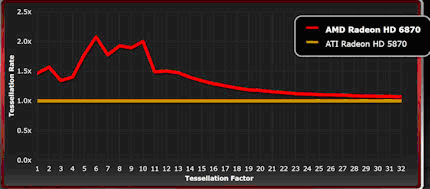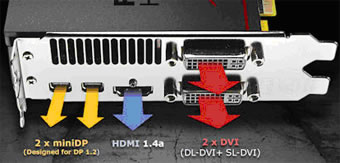Our Aim
To provide you with an overview on New And existing technologies, hopefully helping you understand the changes in the technology. Together with the overviews we hope to bring topical issues to light from a series of independent reviewers saving you the time And hassle of fact finding over the web.
We will over time provide you with quality content which you can browse and subscribe to at your leisure.
TekSpek 's

AMD 6800 Series
Date issued:
AMD released the Radeon HD 6850 and Radeon HD 6870 graphics cards on October 22, 2010. Armed with new features and debuting at £150-£200, this TekSpek examines what the two graphics cards mean to you, the consumer.
The Technology
Looking back in recent history, AMD released the Radeon 5870 and HD 5850 in September 2009. These two performance-orientated graphics cards cost £300 and £200, respectively, at launch. A year later, both cards retail for roughly the same money. This is down to, until recently, a genuine lack of competition from NVIDIA - AMD's arch-rival - and a deteriorating exchange rate.
Now committed to releasing new families of discrete graphics cards on an almost-yearly basis, the Radeon HD 6800-series is the natural successor to the well-received HD 5800 range. AMD is taking much of what it learnt in designing the Radeon HD 5870 and applying the lessons to Radeon HD 6850/70, but it's doing so with a twist.
Both new Radeon cards are based on very similar architecture to the one-year-old Radeon HD 5850/70. The interesting aspect is that the new GPUs are selling for significantly lower prices and, consequently, aren't as powerful. This seems strange given the jump in the model-numbering system. Putting these words into context, here's a brief table with the cards' key performance-defining specifications:
| Graphics cards | ATI Radeon HD 5870 1,024MB | ATI Radeon HD 5850 1,024MB | ATI Radeon HD 6870 1,024MB | ATI Radeon HD 6850 1,024MB |
| Transistors | 2.15bn | 2.15bn | 1.75bn | 1.75bn |
| Die size | 334mm² | 334mm² | 255mm² | 255mm² |
| General clock | 850MHz | 725MHz | 900MHz | 775MHz |
| Shader clock | 850MHz | 725MHz | 900MHz | 775MHz |
| Memory clock | 4,800MHz | 4,000MHz | 4,200MHz | 4,000MHz |
| Memory interface and size | 256-bit, 1,024MB, GDDR5 | 256-bit, 1,024MB, GDDR5 | 256-bit, 1,024MB, GDDR5 | 256-bit, 1,024MB, GDDR5 |
| Memory bandwidth | 153.6GB/s | 128GB/s | 134.4GB/s | 128GB/s |
| Shaders | 1,600 | 1,440 | 1,120 | 960 |
| GFLOPS | 2,720 | 2,088 | 2,016 | 1,488 |
| Texturing | 80ppc bilinear | 72ppc bilinear | 56ppc bilinear | 48ppc bilinear |
| ROPs | 32 | 32 | 32 | 32 |
| Board power (max) | 188W | 151W | 151W | 127W |
| Multi-GPU | Four-way XFire | Four-way XFire | Two-way XFire | Two-way XFire |
| Board length | 11in | 9.5in | 9.5in | 9in |
| Outputs | 2x dual-link DVI HDMI, Display Port |
2x dual-link DVI HDMI, Display Port |
SL+DL DVI HDMI, 2x Display Port |
SL+DL DVI HDMI, 2x Display Port |
| Retail price (Oct 2010) |
£295 | £215 | £175 | £150 |
One would expect newer graphics card to be more powerful than the ones they replace, but this patently isn't the case here. Compare the Radeon HD 5870 against the HD 6870 and you see that it has a) more memory bandwidth b) more shading power and c) more texturing power. These are the key fundamentals that shape graphics-card performance. The same is more-or-less true when looking at Radeon HD 5850 vs. Radeon HD 6850.
AMD is deliberately introducing lower-cost Radeons this time around. They are cheaper to manufacture, consume less power, and have a greater range of inputs than the cards whose model numbers they take on. Indeed, Radeon HD 6870 is 40 per cent cheaper than HD 5870, and the HD 6850 is 45 per cent cheaper than HD 5850.
Improvements over Radeon HD 5800-series
But AMD has a few tricks up its sleeve to ensure than the new Radeons perform much better than on-paper specifications suggest. The Radeon HD 6850/70 have significant improvements to what is known as the 'tessellation engine'. In simplistic layman's terms this is a process that creates detailed graphics and lifelike models without overburdening the GPU. It's a method used by the DirectX 11 API and is incorporated into some of the very latest games - Civilization V and DiRT 2 are examples.

The new Radeons' tessellation performance is up to 2.5x better than on previous generations, and, when applicable, it helps bridge the performance deficit that is shown in the table. AMD has also improved image quality in the Radeon HD 6850/70 through a better implementation of what is known as anisotropic filtering.
Multimedia improvements
Radeon HD 6850/70 also see upgrades in the multimedia department. These centre on improved connectivity and better video processing.

Radeon HD 5850/70 cards have a standard array of ports that comprises of two dual-link DVI - good for driving 30in monitors - HDMI and DisplayPort. This time around, HDMI is upgraded to v1.4a, which means the HD 6850/70 are able to support HDMI transfers of 3D Blu-ray material as well as super-high-resolution monitors and projectors.
There are now two mini-DisplayPort connectors on most cards. Upgraded to v1.2 of the specification, they can each power multiple DisplayPort-capable monitors for up-to a six-monitor setup under AMD's Eyefinity program. With the plethora of digital options available, AMD pinches pennies and reduces the lower DVI port to single-link specification. This means that it can't drive the 2,560x1,600 monitors that professional users may want to use, although most modern screens capable of that resolution now ship with an HDMI port.
In short, the benefits of AMD's new Radeons' connectivity options easily outweighs the disadvantages. Graphics card do more than just run games, however, and AMD acknowledges this by tacking what it terms the Unified Video Decoder to every GPU. Its job is to take the load of encoding and decoding video content off the CPU. Radeon HD 5850/70 ship with UVD2. Now in UVD3 form, the newest iteration provides hardware acceleration for the multi-view codec used in Blu-ray 3D - dovetailing nicely with the 3D-over-HDMI feature - and support for both DivX and vVid codecs.
Bear in mind that all quad-core desktop CPUs can handle these operations without stalling, so UVD3 makes most sense in the mobile Radeon parts.
Performance
Coming full circle and appreciating the improvements made by AMD, the performance of the £150 Radeon HD 6850 is over 90 per cent of the £215 Radeon HD 5850's, while the HD 6870 performs at roughly 90 per cent of the level exhibited by the year-old HD 5870. Factor in the prices and one can see that the new cards offer a better bang-for-the-buck with respect to performance and features.
Arch-rival NVIDIA's response to the new cards has been to reduce the price of its GeForce GTX 470 - the competitor to Radeon HD 6870 - by over 10 per cent, to under £200. The same price-cutting has been in evidence for the excellent GeForce GTX 460 1,024MB and 768MB cards. These now start at £140 and £115, respectively, and vie for your money against the Radeon HD 6850.
Bottom line
The introduction of the Radeon HD 6850 and HD 6870 graphics cards puts AMD in a very strong position in the £150-£200 market. Capable in terms of architecture and equipped with lots of useful multimedia features